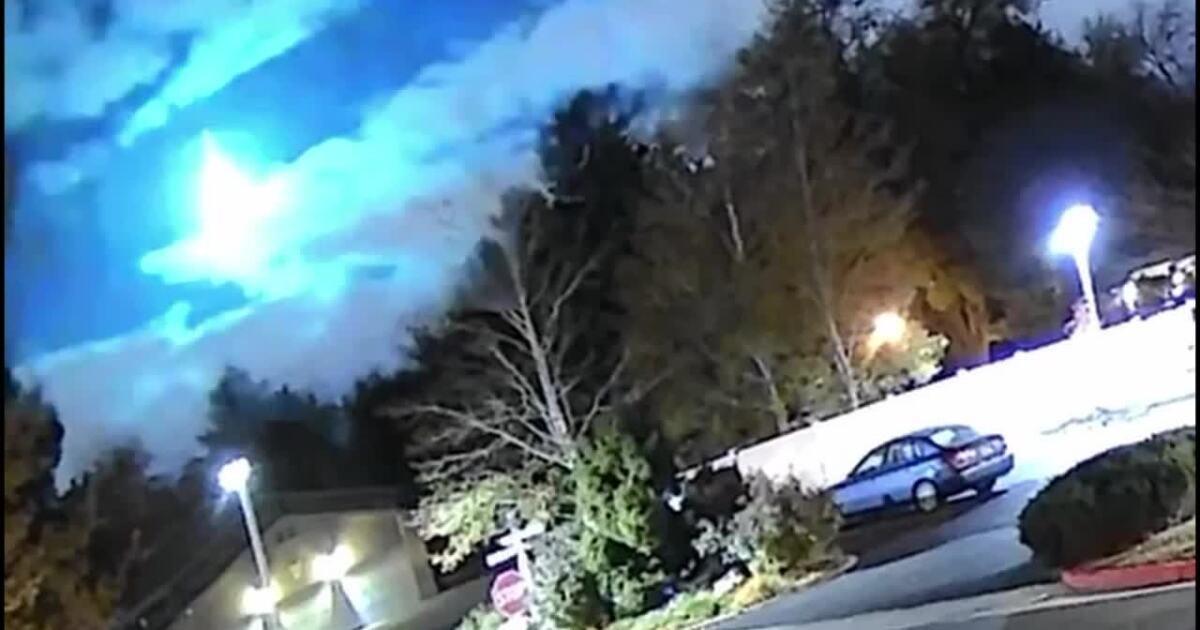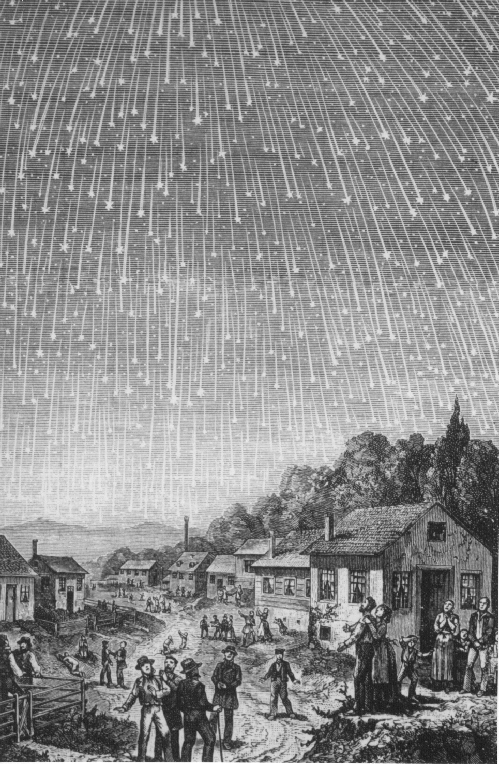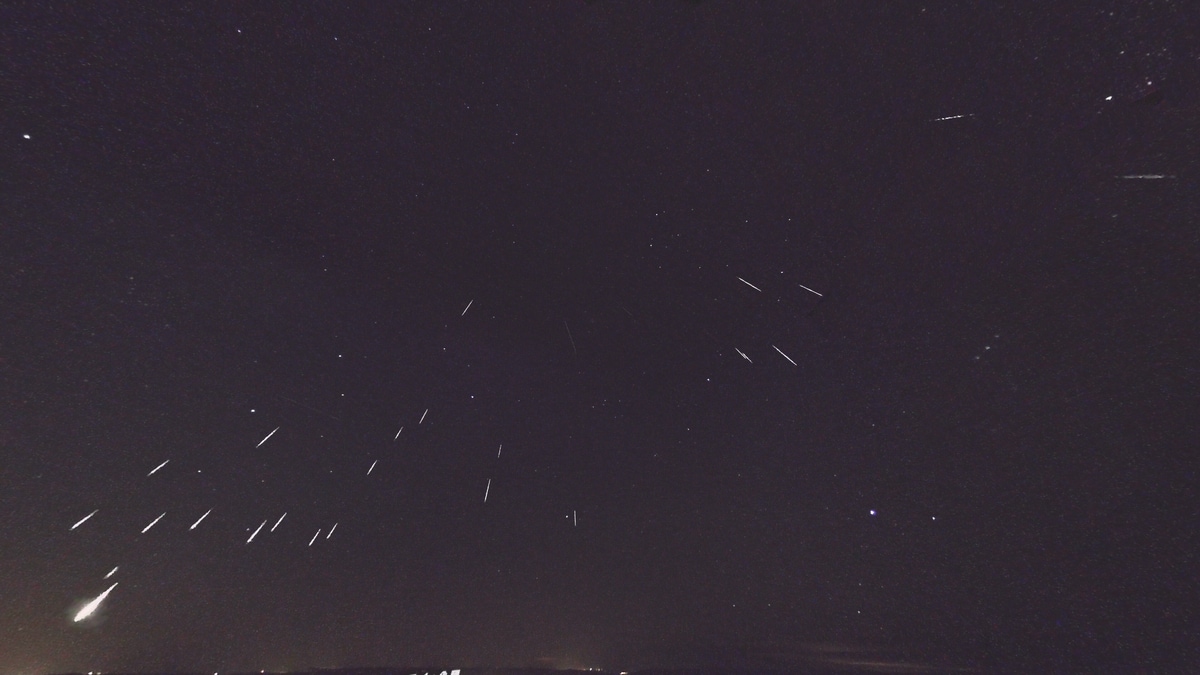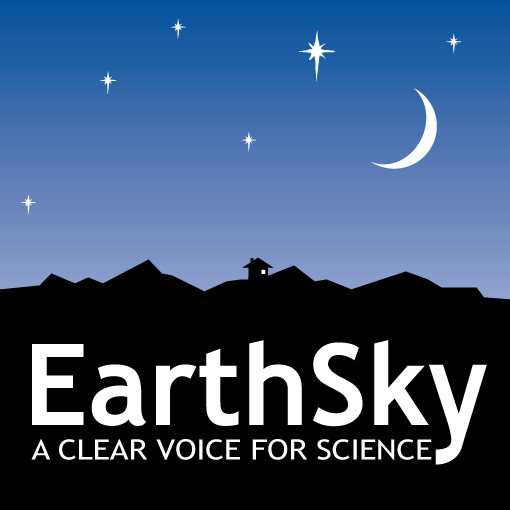You are using an out of date browser. It may not display this or other websites correctly.
You should upgrade or use an alternative browser.
You should upgrade or use an alternative browser.
Near-Earth objects and close calls
- Thread starter Gawan
- Start date
It's sure getting busy up there.

 www.smithsonianmag.com
November 1, 2022
www.smithsonianmag.com
November 1, 2022

Line-1
If, for example, it were a much denser asteroid, I mean with a different composition, such as iron, would the result be the same? Thank you!!!
Line-2
Of course not. The consistency, internal structure and composition of the asteroid count a lot in the result. But most potentially dangerous asteroids are like Dimorphs: piles of rubble #RubblePiles
This recent incident claimed that a bullet had breached the cabin while landing.
Accident: MEA A320 at Beirut on Nov 10th 2022, object penetrates cabin

Dated:


Three Near-Earth Asteroids Were Hiding in the Sun’s Glare
One of them, which measures nearly one mile wide, might cross paths with Earth in the distant future
Astronomers have discovered three asteroids that had been “hiding” unseen in the sun’s glare. The space rocks are considered near-Earth objects—meaning their orbits take them within roughly 120 million miles of the sun.
The biggest of the three asteroids, named 2022 AP7, is nearly one mile wide—large enough to be called a “planet-killer.” And it has an orbit that might one day cross paths with Earth’s, according to a Monday statement from NOIRLab, which operates the telescope that spotted the asteroids.
But the discovery should not be cause for alarm, experts say. “There is an extremely low probability of an impact in the foreseeable future,” Tracy Becker, a planetary scientist at the Southwest Research Institute who did not contribute to the work, tells the New York Times’ Robin George Andrews.
Scientists say 2022 AP7 will stay away from Earth, for now. But the asteroid might not be harmless forever. “Way down the line, in the next few thousand years, it could turn into a problem for our descendants,” Alan Fitzsimmons, an astronomer at Queen’s University Belfast in Northern Ireland who did not contribute to the work, tells the Times.
In the event that the asteroid collides with our home planet at a far-future date, “it would be a mass extinction event like hasn’t been seen on Earth in millions of years,” Scott Sheppard, an astronomer at the Carnegie Institution for Science, says to CNN’s Ashley Strickland.
Sheppard and others detailed their discovery in September in The Astronomical Journal.
All in all, astronomers have found 27,000 near-Earth asteroids, per CNN. Of these, just under 1,500 have some (incredibly small) chance of colliding with Earth during the next 100 years, according to Gizmodo’s Isaac Schultz.
The near-Earth asteroids hold a minimal risk, but in case of a future threatening space rock, scientists are developing protective techniques. In September, NASA’s DART mission successfully shifted the orbit of a small, benign asteroid by bumping it with a spacecraft.
While astronomers have spotted thousands of near-Earth asteroids, they’ve only found about 25 that are inside Earth’s orbit—a task that is “incredibly difficult… with our current discovery telescopes,” Cristina Thomas, a planetary astronomer at Northern Arizona University who did not contribute to the research, tells the Times.
For one, the sun’s glare makes them hard to see. And astronomers hoping to find these objects have to look near the horizon, where the thickness of Earth’s atmosphere distorts the view, per NOIRLab. Plus, they only have two ten-minute windows to search the inner solar system for these objects each night.
To make their discovery, researchers used the Dark Energy Camera (DECam) on the Víctor M. Blanco 4-meter Telescope in Chile. “DECam can cover large areas of sky to depths not achievable on smaller telescopes, allowing us to go deeper, cover more sky and probe the inner solar system in ways never done before,” Sheppard says in the statement.
Neither of the two other asteroids spotted has an orbit that intersects with that of Earth, per NOIRLab.
One of these two is the closest known asteroid to the sun, and, like 2022 AP7, it's considered a “planet killer.” Though astronomers have already located most asteroids of this size, “we know some are still out there to find,” Fitzsimmons tells the Times.
Line-1
If, for example, it were a much denser asteroid, I mean with a different composition, such as iron, would the result be the same? Thank you!!!
Line-2
Of course not. The consistency, internal structure and composition of the asteroid count a lot in the result. But most potentially dangerous asteroids are like Dimorphs: piles of rubble #RubblePiles
This recent incident claimed that a bullet had breached the cabin while landing.
Accident: MEA A320 at Beirut on Nov 10th 2022, object penetrates cabin
Dated:
Last edited:
A bright fireball streaked through the night sky over the Utah, US.

 www.fox13now.com
By Jeff Tavss - Nov 11, 2022
www.fox13now.com
By Jeff Tavss - Nov 11, 2022

Make a wish! Meteor fireball seen over Utah
Many in northern Utah got that chance Thursday after seeing a streaking beam of light that was most likely a meteor.
This morning a bright fireball of the Leonid meteor shower streamed by at 5:17:25 on November 17, 2022, as captured by a camera pointed southeast from Hiratsuka, Japan. It left a beautiful green meteor trail. The Leonid meteor shower will reach its peak at dawn on November 18. (T.Deepl)
Upcoming Earth-asteroid encounters
M.D: miss distance LD: Lunar Distance (distance from the center of Earth to the center of the Moon, approximately 400,000 km)
VEL: Velocity (Km/s)
DT: Diameter (m)
SpaceWeather.com
Upcoming Earth-asteroid encounters
ASTEROID | DATE | M.D. | VEL | DT |
| 2022 US14 | 2022-Nov-18 | 8.5 LD | 8.3 | 41 |
| 2022 VM2 | 2022-Nov-18 | 8.2 LD | 3.7 | 24 |
| 2022 VO2 | 2022-Nov-19 | 8.9 LD | 14.6 | 24 |
| 2022 VU1 | 2022-Nov-20 | 7 LD | 7.1 | 17 |
| 2022 VR1 | 2022-Nov-20 | 4.1 LD | 5.7 | 39 |
| 2022 VX | 2022-Nov-20 | 11.2 LD | 5.9 | 14 |
VEL: Velocity (Km/s)
DT: Diameter (m)
SpaceWeather.com
Some visible comets coming into view soon. This table lists the visible comets for the coming 3 months. Note that comets 96P/Macholz and C/2022 E3 should be visible by end January and beginning February 2023.
Use Skylive to determine the comets location (remember to change location to Your Location from the default Greenwich, UK). Once you have the correct location, a list below tells you what is visible or not depending on the time of the day.
Use this table to determine visibility magnitude.
Use Skylive to determine the comets location (remember to change location to Your Location from the default Greenwich, UK). Once you have the correct location, a list below tells you what is visible or not depending on the time of the day.
Use this table to determine visibility magnitude.
The Night the Stars Fell
This famous engraving of the 1833 Leonid meteor shower was produced for the Adventist book Bible Readings for the Home Circle by Adolf Vollmy. It’s based on a painting by Swiss artist Karl Jauslin, which, in turn, was based on a first-person account of the 1833 storm by a minister, Joseph Harvey Waggoner, who saw the 1833 shower on his way from Florida to New Orleans.
In that famous shower, hundreds of thousands of meteors per hour were seen! It was the first recorded meteor storm of modern times. Read more about the 1833 Leonid meteor shower in this post.

| EarthSky
Check out this old engraving of the November 1833 Leonid meteor shower. It's one reason this shower - due to peak this weekend - is so famous.earthsky.org
Benjamin
The Living Force
Last night on my final walkabout (~12:30) before bed, I saw this meteor. I have never seen a green meteor before and this one was really green!

 fireball.amsmeteors.org
fireball.amsmeteors.org

American Meteor Society
We received 30 reports about a fireball seen over Alberta, British Columbia, ID, MT, OR and WA on Thursday, November 17th 2022 around 13:24 UT.
Debra
The Living Force
My niece living in Norway sent this article to me this morning.
Although the pictures and article are from today, this sighting happened on October 30th.
The trajectory of the object, or objects came from the direction of the Ukraine, over Sweden, and then broke up over Norway so the suspicion that it may have been a man made projectile, or weapon had to be analyzed.
I’ve included some of the details, translated into English:
“Video cameras on Gaustatoppen in Telemark captured the incident. It happened at 04:54 on the night of 30 October.

- This is something we cannot explain, says Morten Bilet in the Norwegian Meteor Network.
The lights look like meteors. There are fast moving lights in the sky.
Meteors are not an uncommon sight. If you look up when the stars are clear, you will almost certainly see a meteor within an hour. Nevertheless, what happened on 30 October is far from the norm.”
“It is completely unique that so many meteors should appear in the night sky in such a short time. So we don't know where this is coming from, or what the cause is, says Bilet.
In the video from the event, it is clear that all 23 objects come out of the same point in the sky.”[…]
“This was an extended beam of objects that arrived at Earth at approximately the same time, explains Midtskogen.
The video recordings also provide information about the speed of the objects.
- They came quickly. 64 kilometers per second. That is much higher than the speed of what we humans have sent into space. So this is not space junk, says Midtskogen.”
[…]

 www.nrk.no
www.nrk.no
Although the pictures and article are from today, this sighting happened on October 30th.
The trajectory of the object, or objects came from the direction of the Ukraine, over Sweden, and then broke up over Norway so the suspicion that it may have been a man made projectile, or weapon had to be analyzed.
I’ve included some of the details, translated into English:
“Video cameras on Gaustatoppen in Telemark captured the incident. It happened at 04:54 on the night of 30 October.
- This is something we cannot explain, says Morten Bilet in the Norwegian Meteor Network.
The lights look like meteors. There are fast moving lights in the sky.
Meteors are not an uncommon sight. If you look up when the stars are clear, you will almost certainly see a meteor within an hour. Nevertheless, what happened on 30 October is far from the norm.”
“It is completely unique that so many meteors should appear in the night sky in such a short time. So we don't know where this is coming from, or what the cause is, says Bilet.
In the video from the event, it is clear that all 23 objects come out of the same point in the sky.”[…]
“This was an extended beam of objects that arrived at Earth at approximately the same time, explains Midtskogen.
The video recordings also provide information about the speed of the objects.
- They came quickly. 64 kilometers per second. That is much higher than the speed of what we humans have sent into space. So this is not space junk, says Midtskogen.”
[…]

Noe ukjent har truffet Norge
I løpet fem sekunder registrerte kameraer i Telemark 23 ukjente objekter på himmelen. De beveget seg i ekstremt høy hastighet og brant opp. Ekspertene kan ikke forklare hva det var.
I wonder if they are related. Perhaps a minor precursor may be related events representing a very very small cluster!Last night on my final walkabout (~12:30) before bed, I saw this meteor. I have never seen a green meteor before and this one was really green!

American Meteor Society
We received 30 reports about a fireball seen over Alberta, British Columbia, ID, MT, OR and WA on Thursday, November 17th 2022 around 13:24 UT.
Last edited:
Asteroid hit Canada mere hours after discovery
Astronomers spotted an asteroid just hours before it impacted with Earth this morning (November 19, 2022), near Lake Erie. This is not the first time this year astronomers have discovered a rock from space just hours before it hit Earth. But this time, it impacted over a populated area, crossing the skies of Toronto, Canada. So we have video and witnesses who said they saw, heard and felt the impact.
Ye Quanzhi, a University of Maryland astronomer who studies asteroids, comets and meteors, reported on Twitter at 1:13 a.m. EST on November 19:
He shared the link for NASA’s Center for Near Earth Object Studies Hazard Assessment page. The object, C8FF042, is now removed from the page because it has struck Earth and is therefore no longer a threat.
Precise prediction
At 2:29 a.m. EST, Richard Moissl tweeted that the asteroid should impact around 8:26 UTC, which translates to 3:26 a.m. EST. That turned out to be incredibly accurate, as cameras around Toronto captured the bolide at 3:25 and 3:26 a.m. The CN Tower cam in Toronto was one of the cameras that saw the asteroid’s nearly horizontal entry.
| EarthSky
Benjamin
The Living Force
I wonder if they are related. Perhaps a minor precursor may be related events representing a very very small cluster!
You know what? I had a much closer look at the report that I linked to, which is the same one you linked to from AMS, and I realize that the one that I saw was not the same event. The report we linked to happened in the southwest corner of Alberta at ~6:25 am MST, Nov. 17. The one I saw was south-central around ~12:30 am MST, Nov. 18. The two are completely different events. Along with the other reports, it does look like it might have been a small cluster.
Last edited:
You know what? I had a much closer look at the report that I linked to, which is the same one you linked to from AMS, and I realize that the one that I saw was not the same event
6th asteroid discovered just before hitting Canada yesterday: #2022WJ1 Fortunately they have all been a few meters in diameter and have only produced falls of #meteorit
Yesterday we observed this BOLID of the TAURIDS While we were enjoying the observation a flash of blue and green light was observed Prades According to reports the @RedSpmn @Josep_Trigo disintegrated at 75km s. n. it shone brighter than the MOON itself! We attest
SideNote:
